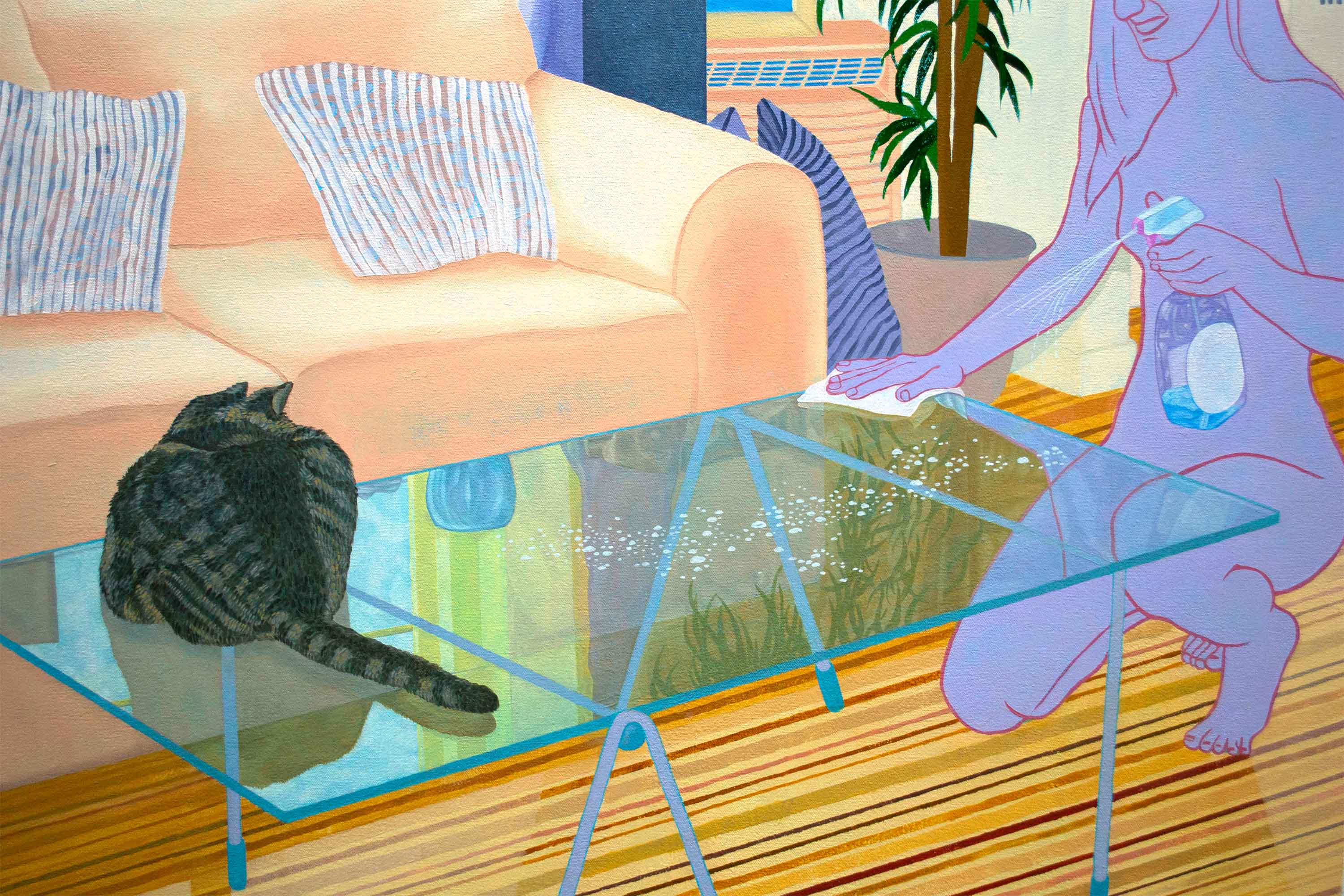
October 11, 2019
Kayla Polan
Good Naked & Bad Naked
October 11, 2019
Kayla Polan
Good Naked & Bad Naked
Kayla Polan (b. Canada 1994) is a multidisciplinary artist working across traditional and new media. She is a current MFA Candidate at the University of Waterloo. She received her BFA, major in Drawing & Painting, from the Ontario College of Art & Design University.
Her practice melds feminism and popular culture to investigate contemporary ideas about domesticity, the home, and consumer culture. In her current work, Polan aims to deregulate notions of appropriateness surrounding bodies, and push through generalized domestic imaginaries to grapple with lived experience and materiality of the domestic sphere. Polan examines the importance of interior space in shaping new subjectivity, and the concept of home through ideas of queer interiority.
Lauren Armstrong
Kaylon Polan
What are you working on now?
I’ve got a bunch of things on the go at once right now. I’m currently a grad student at the University of Waterloo; I’m working on my thesis and planning for a solo show in April at UWAG. I’m producing a lot of different work for the show, and then I’ll pair it down. All of the work reflects on questions of personal and social identity, and the search for meaningful experience and connection in the everyday. The concept of home is present throughout all the work, thinking about the lived experience and materiality of the domestic sphere from a queer feminist perspective. Thinking about desire, expectation, ideology, and everyday life activities and practices present in domestic space. With that in mind I’m working on two different series,’ one called Bad Naked that consists of oil paintings and mixed media drawings, and another oil painting series that is in the very beginning stages of research. I’m also working on a sculpture series, and some furniture works.
Where do you draw your inspiration from? (This can be anything, places, people, movies, music etc.)
I draw inspiration from all sorts of popular culture. My work almost always uses popular culture as a springboard for further investigation. I’ve done work that references a television show, or tabloid magazines, for example. But I don’t think it’s necessary that the viewer knows the backstory to understand the work, because the work always moves beyond the initial pop culture reference. Some of my favourite artists are David Hockney, Jonas Wood, Paul Wackers, Andy Dixon, Guy Yanai, Jonathan Chapline, Hilary Pecis and Lois Dodd. All of these artists inspire me for different reasons, be it color, composition, technique, or conceptual considerations. A place that I’m inspired by is Los Angeles. I’m moving there once I’m done pursuing graduate school. LA is fascinating – the people, the culture, and the landscape. I think once I move there I’m going to spend a lot of time painting the architecture, the public spaces and the interiors of people that I encounter in those settings. LA feels like home, which I haven’t really felt before in Canada. I always listen to podcasts while I work. I find that if I’m listening to something interesting then I have more energy to work. I’ve been listening to The Art History Babes, The Conversation Art Podcast, Backtalk from Bitch Media, and also Your Moms House with comedians Tom Segura & Christina P. because I think they’re hilarious. And as far as music I love grunge, punk and folk punk music. Some of my favourites are Nirvana, the Pixies, Elliott Smith, Meat Puppets, Sonic Youth, the Vaselines, and Butthole Surfers. I think my taste in music probably contributes to my tendency of being punchy, even when I try to be calm and subtle.
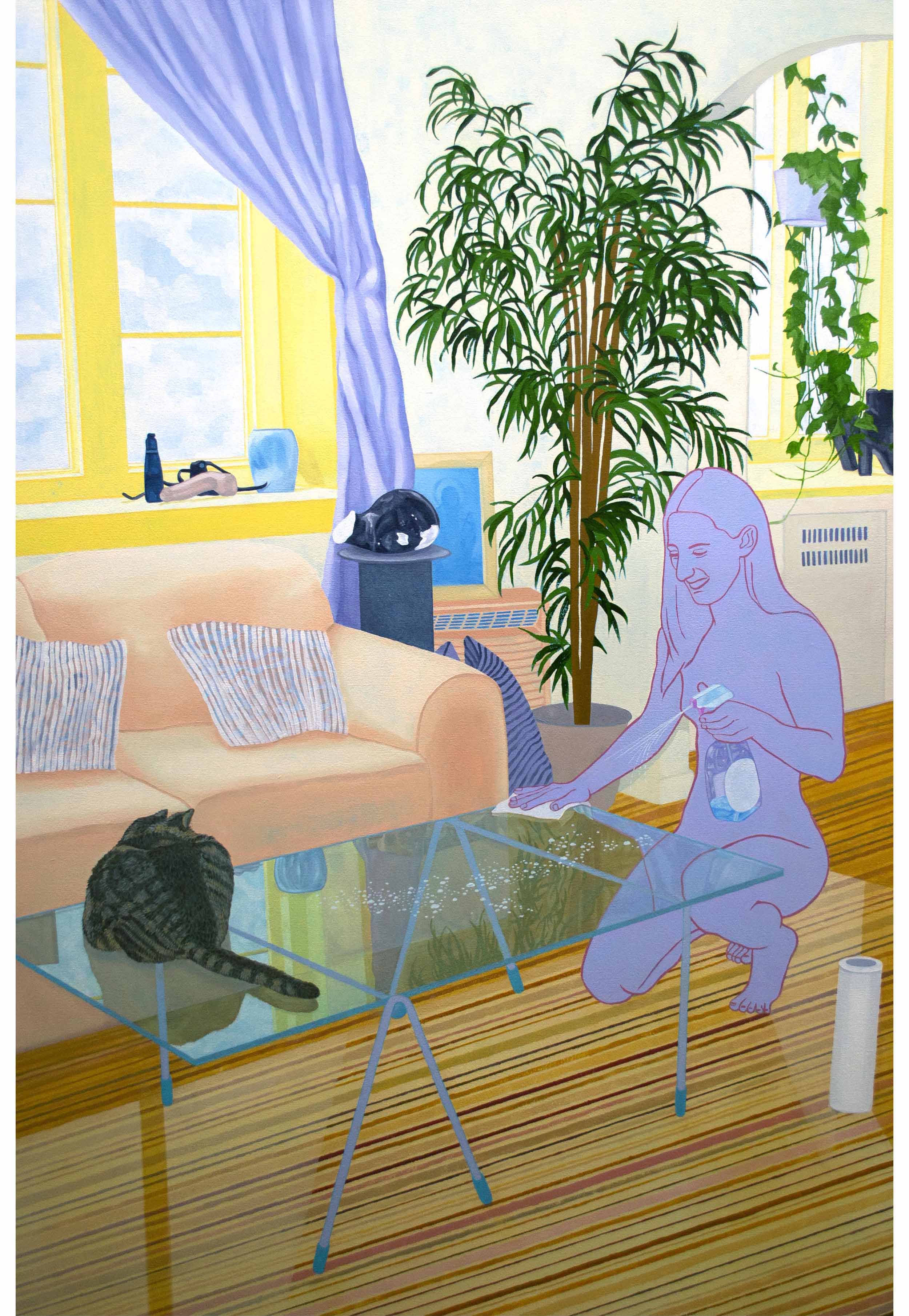
“I considered my use of colour to be a response to the culture that I was investigating.”
Your use of colour is very unique to your practice, how did this develop? Did you ever shy away from colour/were intimidated by it?
I’ll try to take you through a history of my use of colour in my practice. During my undergrad I was learning how to paint representationally, and my chaotic use of colour was one way that I allowed myself some freedom. I still think this is true now. And then during my undergrad thesis I was working with BDSM related subject matter, and that project was attempting to subvert one’s common associations with BDSM. I tried to do that in many ways, and with colour in particular I tried to do the opposite of what one would expect for a BDSM scene. You would probably expect a dark, sexy colour palette of mostly red, grey and black so I didn’t want to do that. Since I was trying to change peoples’ expectations of the subculture, a bright colour palette made sense at the time. Following my undergrad I started being more influenced by popular culture, I was looking at advertising, magazines and reality television, so I considered my use of colour to be a response to the culture that I was investigating. And now in the present my interests lie more in domestic spaces. When I started my recent series Bad Naked I was still using really punchy colours. But then I began questioning why, and I’m finding it increasingly difficult to articulate a reason for it anymore (other than perhaps out of habit). So now with my last two paintings I’ve embraced a more reduced colour palette. I’ve been looking at a lot of home and lifestyle magazines as research, and I’m noticing that interior design colour palettes are seeping into my ways of working. And I’m embracing change a lot these days, though I think that comes with territory of grad school.
All that said, still to this day I don’t do any planning with my colour choices. And this does make my paintings more of a struggle, but I think more interesting work comes from a bit of struggle. I actually intentionally make myself struggle more in my process. For example, with my first layer of paint I always cover the entire canvas with a super bright colour (I still start this way even now that I’m trying a reduced colour pallet), and then I start the painting on top of that. So let’s say I make my background colour is neon orange, and I mix a green on my palette that I think is really nice… Once I put that green on the neon orange canvas it looks completely different than it does on my palette. So this forces me to intentionally mix all my colours differently than what I’m imagining. And I paint so thin that the layers underneath always show through, changing the colour that you see. And I don’t do underpaintings either, I just couldn’t be bothered. Sometimes I drive myself crazy but I also really enjoy these parts of my process, because I find all these subtleties that come from all the layers of struggle.
“I think more interesting work comes from a bit of struggle.”
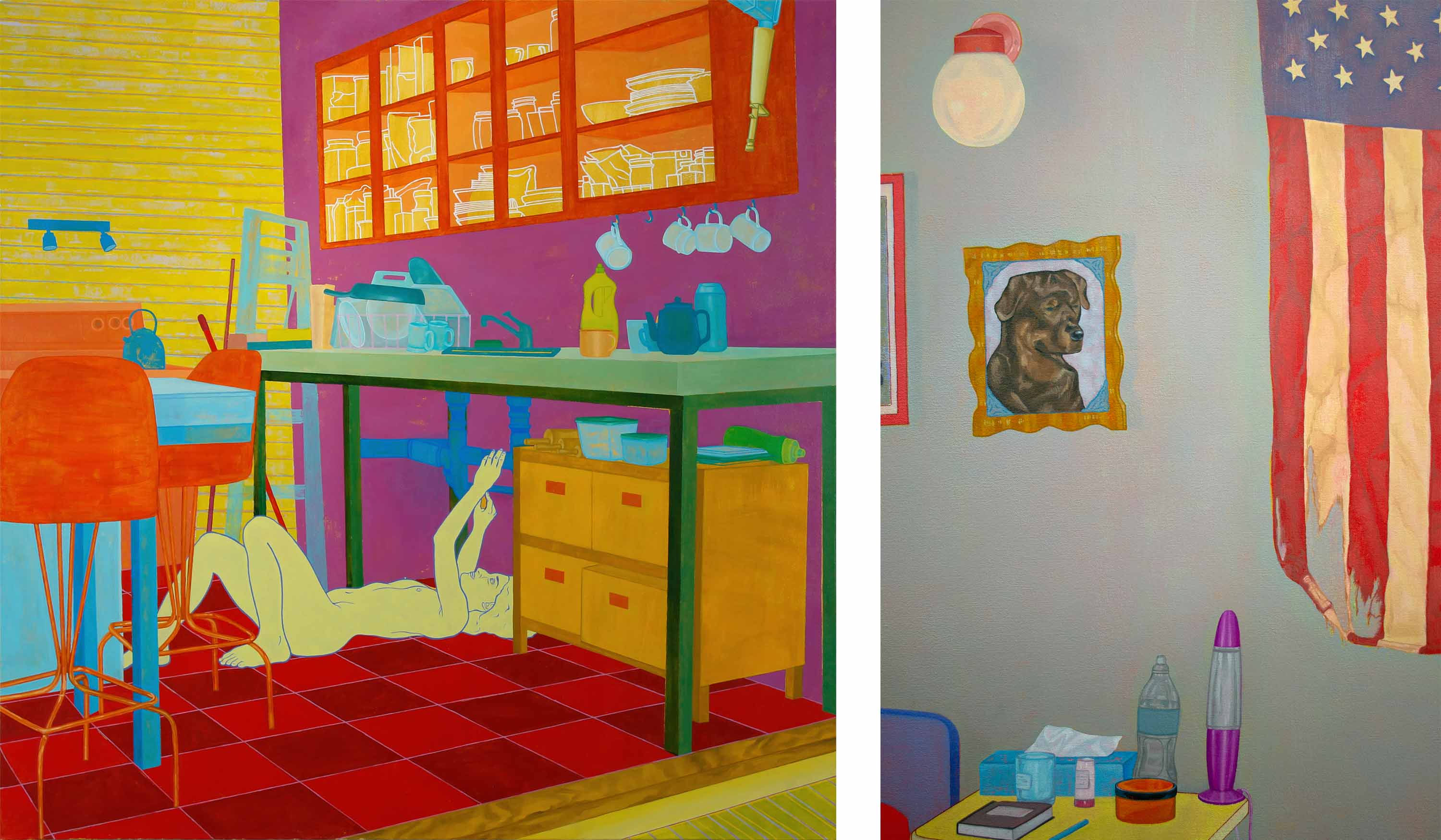
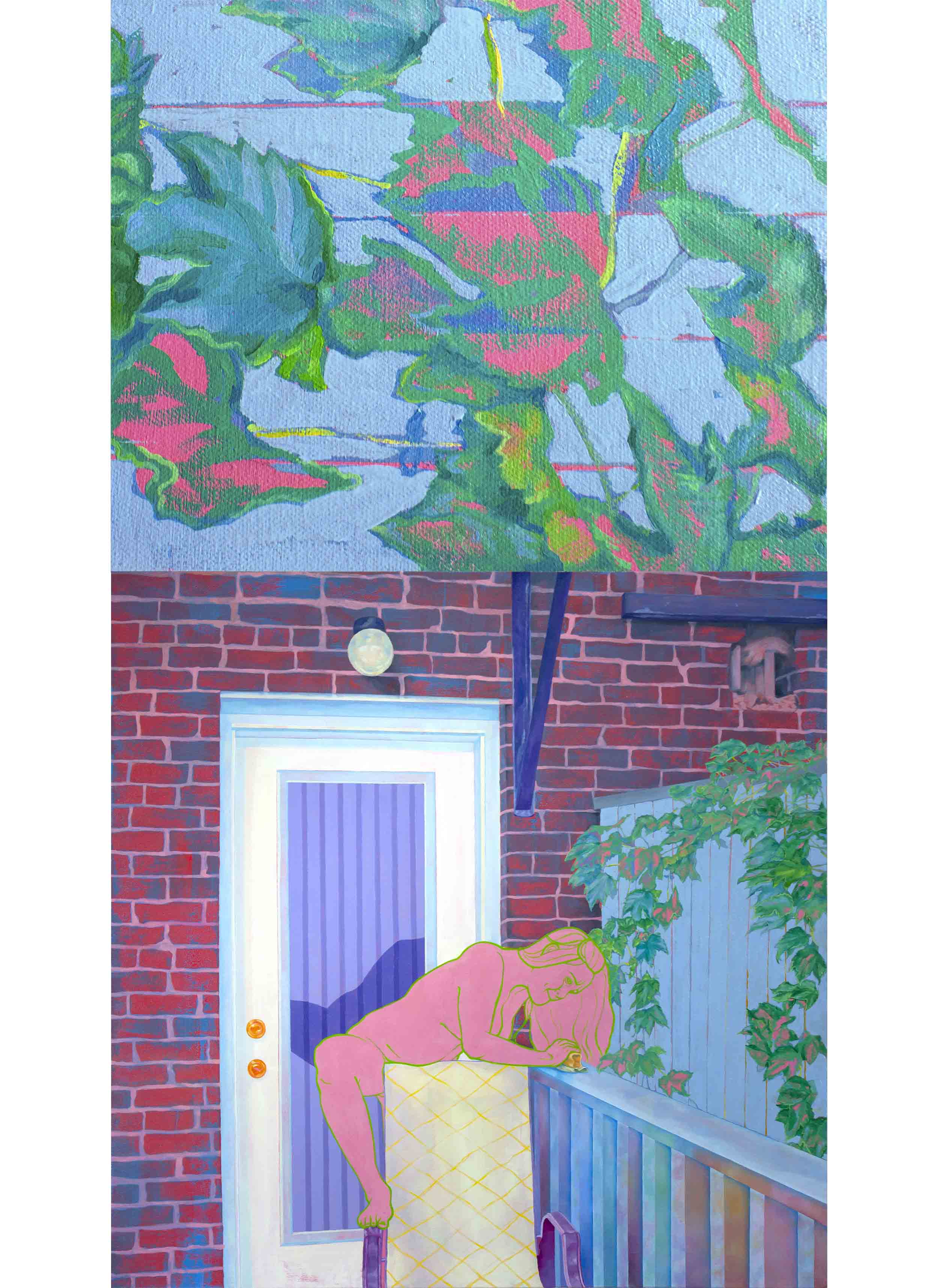
“My current painting series Bad Naked is inspired by an episode of Seinfeld.”
A lot of your paintings focus on domestic spaces, how do you conceptualize these scenes?
My current painting series Bad Naked is inspired by an episode of Seinfeld. In this episode Seinfeld gets a new girlfriend who is naked around the apartment all the time. He goes to the diner and complains to his friends that he doesn’t want to see her opening a pickle jar naked, or coughing naked, or washing the floor naked, whatever. He says there is a distinction between good naked and bad naked. My response to this was twofold. I thought it was comical, but I also thought it was a bit problematic because in his view “bad naked” is a non-sexual naked. So in response to this episode I asked my friends what they believe their “bad naked” to be. It was interesting because I got a wide range of responses, which vary across all levels of discretion. And then I go to their house and then photograph them doing whatever is their “bad naked.” I never really know what the scene will be until I get to my friends house and work with them. Going to their space is important to me because their space acts as a portrait of the person; the figures claim their space and their objects/space give them a further sense of identity. And then I’ll choose the best photos with my friend, as I don’t want to paint them in a way that they’d be uncomfortable with being portrayed given that it’s quite intimate subject matter. So each painting is collaboration in that part of the process. One part of the work is about breaking the threshold of respectability, and challenging expectations surrounding the appropriateness of bodies. The other part of the work is about domestic space – a catalogue of habits, an archive of commodity consumption, the demands of aestheticism or functionalism, intimacy or theatricality.
You also work in sculpture and performance art, how does your work shift/stay the same across mediums?
Whenever I’ve worked in sculpture I’ve used the medium as another way to process the ideas that are happening in my paintings. Sometimes working in a different way, a way that’s more haptic and tactile, helps me consider things differently. Like in undergrad I was doing those paintings about fetish and then I thought the material of painting could never fully embody fetish. So I started making sculptures that were smooth, shiny, plastic, silicone and leather. Painting can never fully embody something like sculpture can. So it depends what I’m working on whether or not I feel like I need to process the ideas through sculpture as well.
I would say that when I do performance there is a more dramatic shift. Up until now, when I’ve done performance it hasn’t been closely tied conceptually to my other work. I think that’s because I see performance as a fundamentally different way of working. In performance you can watch a metaphor unfold, as opposed to painting or sculpture where you’re presented with a metaphor to contemplate on. So I tend to work more with concepts that have a narrative that couldn’t come across in a painting. It allows me more freedom to do whatever I want. Though, I think my use of colour, composition, and general visual language stays the same across all mediums. The videos that I’ve done have a similar visual feel to my paintings and sculptures.
“Sometimes working in a different way, a way that’s more haptic and tactile, helps me consider things differently.”
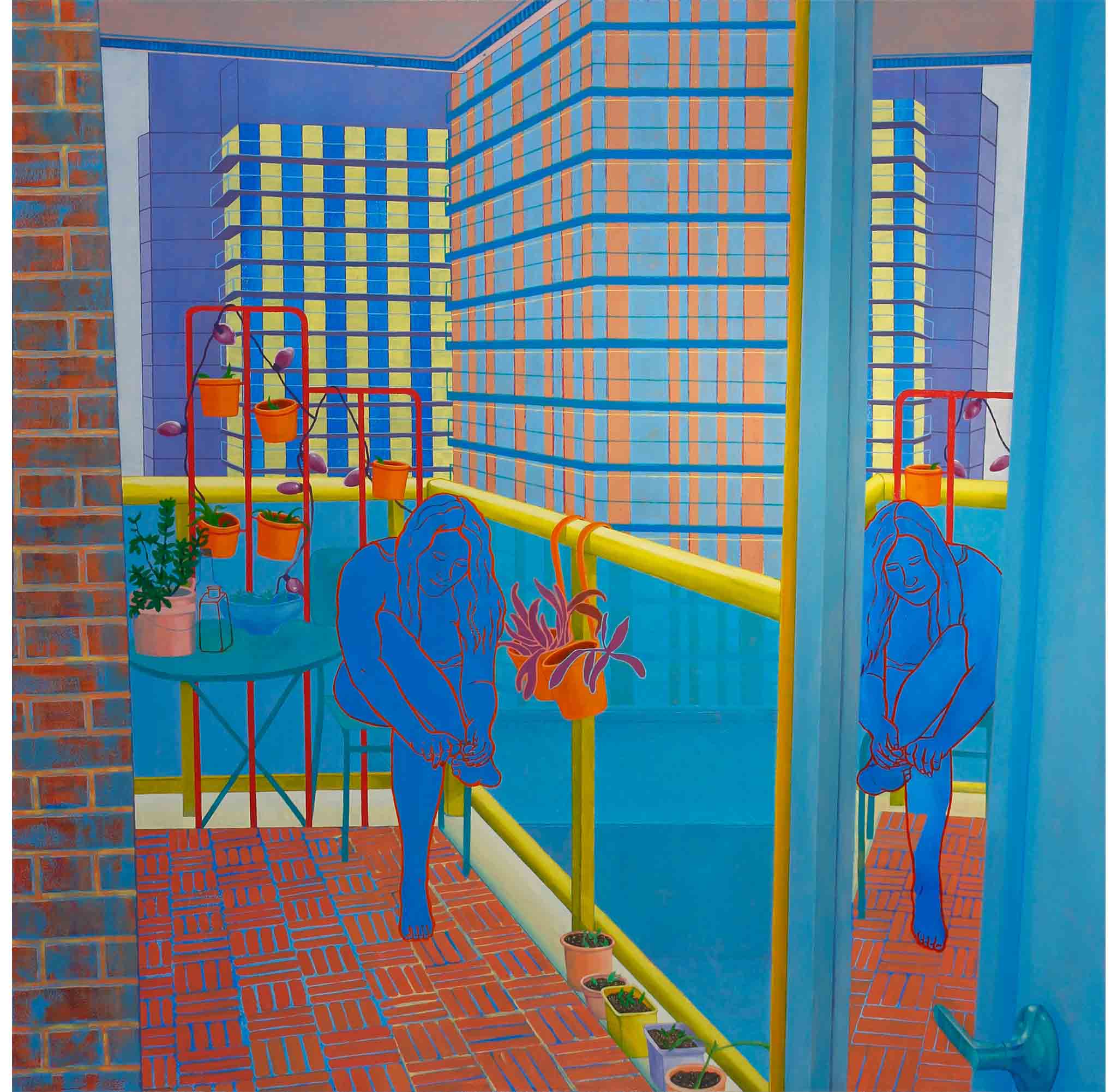
“One part of the work is about breaking the threshold of respectability, and challenging expectations surrounding the appropriateness of bodies.”
Is it important to you that your work is viewed in a particular context?
I think it depends. I can’t dictate what context the work is viewed in once its online, it takes on a context of its own that I cannot control. But if I can assert a level of control over the work, perhaps in a gallery setting or on my own website, then yes I try to deliver the work within a particular context. But if your question is asking whether or not it’s important that the work be read in the way that I intend it to be read when being viewed, well I don’t have much control over that either. But of course I do try to do everything I can to direct the reading of the work in a particular way and then hope for the best.
Do you feel that the writing associated with your work is as important as the work itself?
I think the work comes first for me (and this encompasses the whole process – the research, reading, note taking, and then the physical creation of the work), and the writing associated with the work comes second. What I mean by that is that I hope the work can stand alone without needing writing to explain it. Right now I’m writing my thesis paper, and while I do believe that the text is important insofar as it backs up the work, I would still say the work itself is ultimately more important.
I did a bit of an experiment last semester with this series I called Wedding in Disneyland, it’s in the archive section of my website. That work was a process based experiment. The gap between what you see, and the research that went into making the work is so large that I believe it’s very difficult for a viewer to read into the meaning of it. So in that case I did feel that I needed writing to accompany the work. Ultimately I think that work kind of failed, but that’s okay because I’m completely open to failure. It’s important to not put too much pressure on yourself and just try something new even if you know it may not work.
Do you feel like art can instigate change (whether that be social, political etc.)?
Absolutely. I think it’s pretty evident that art can enable discussion, empower self-reflection, build community, give individuals and communities a voice, tell underrepresented histories, facilitate healing, and contribute to the development of theories, philosophies and political movements.
“The other part of the work is about domestic space – a catalogue of habits, an archive of commodity consumption, the demands of aestheticism or functionalism, intimacy or theatricality.”
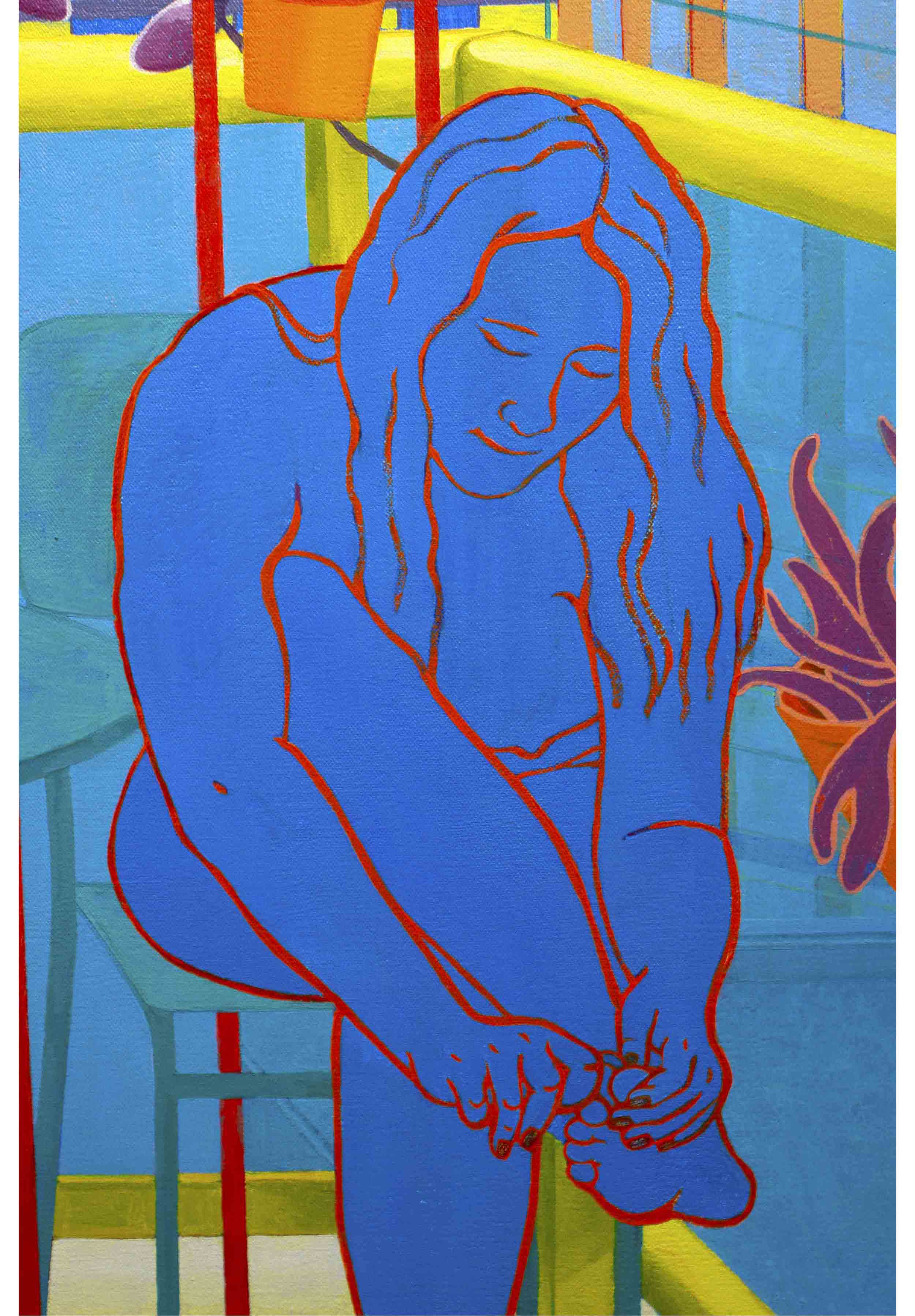
Interview: Lauren Armstrong